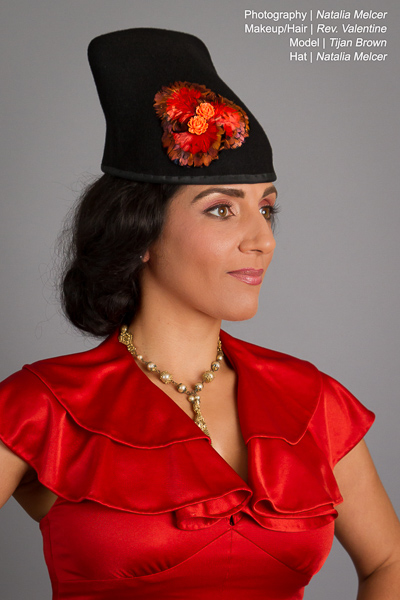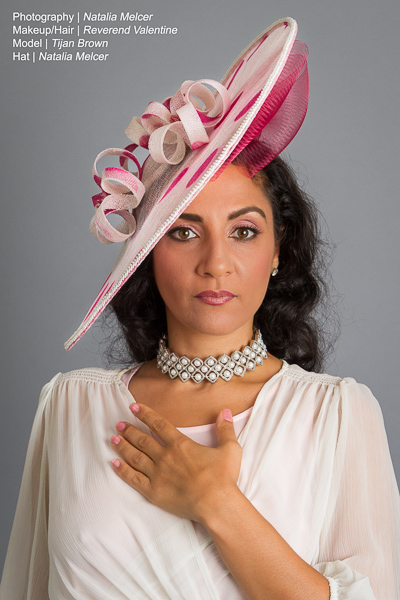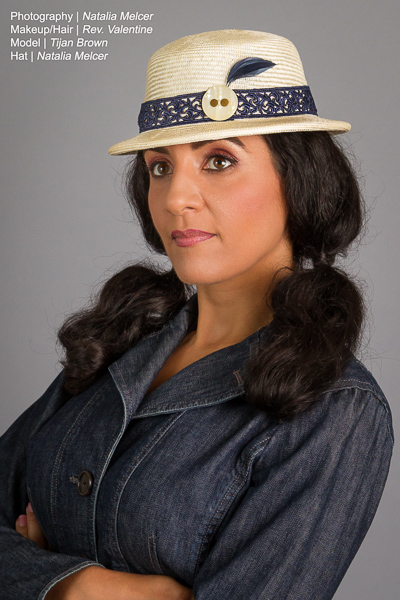By Natalia
Black wool hat in a very unique shape for the bold woman! Three beautiful multi-colored vintage feather pads adorn the front of the hat along with two peach rosettes. Hat was made by blocking the wool over a wooden form. One-of-a-kind handmade hat using traditional millinery techniques.
By Natalia
Saucer hat made from pink polka dot sinamay (woven straw). Three handmade flowers made from strips of the same sinamay and pink vintage stamens adorn one side, a pink crin bow on the other side. Hat is trimmed around the edge and around the center of the bow with a white pearl trim. Hat sits on a circular sinamay base and is secured with an elastic band that goes under the hair. Hat was made by blocking the straw over a wooden form. One-of-a-kind handmade hat using traditional millinery techniques.
By Natalia
Gold parasisal straw hat with a gold and black woven rope hat band and three hand curled ostrich spines. Hat was made by blocking the straw over a wooden form. A sweatband is sewn inside the crown. One-of-a-kind, handmade hat using traditional millinery techniques.
By Natalia
Cream parasisal straw hat with a navy embroidered ribbon hat band, vintage button, and spray of hackle feathers. Hat was made by blocking the straw over a wooden form. A sweatband is sewn inside the crown. One-of-a-kind, handmade hat using traditional millinery techniques.
By Natalia
Christmas has always been synonymous with mountains and snow. Every year, I would fly home to spend time with my family in a small town in the Canadian Rockies. This year, things were a little different. My parents sold their house so we came up with an alternative plan for us to come together for the holidays. We headed south to Merida, Mexico, rented a house, and explored much of the Yucatan peninsula. I hadn’t been to this part of Mexico, but my other trips hardly count (spring break in Mazatlan, one day in Tijuana). So this was my first time really exploring Mexico and I had a great time. I can get used to a new tradition of traveling to warm climates with my family for the holidays!
An interesting factoid: the name Yucatan comes from the Mayan for “I do not understand,” which is what the Mayans said when the Spaniards arrived and started speaking to them in Spanish.
Hover over the photos below for a brief caption explaining the image.
Hacienda Sotuta de Peon
Haciendas are Mexico’s equivalent to American plantations. In the Yucatan, haciendas were built to produce henequen, also known as sisal or green gold. Their heyday was in the early 1900s when henequen was used to make rope, cord, and twine. In the 1940s, after the Yucatan Caste War and the invention of synthetic fibers like nylon, most haciendas were abandoned. Now, some haciendas have been renovated to serve as museums to this once-thriving industry and they often have five star hotels onsite too.
We visited Hacienda Sotuta de Peon, just outside of Merida. It is the only working hacienda in the Yucatan and they offer tours of the entire process, from growing the agave plant, processing the fibers, to making rope. I love learning about these kinds of things. As an added bonus, the hacienda also had a cenote (freshwater sink hole) so we also got to go swimming! I asked whether this plant is the source of parasisal used in hatmaking, but this particular agave plant does not produce high quality fiber. It is only suitable for rope and twine.



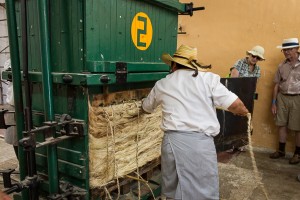
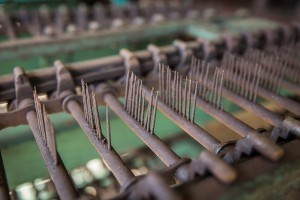


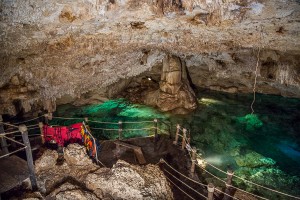
Ria Celestun Biosphere Reserve
The Ria Celestun Biosphere Reserve is due west of Merida, on the coast of the Gulf of Mexico. It is a major stop for migratory birds, including spectacular flocks of flamingos. The bird watching was great. Beyond the expected flamingos, we also saw cormorants, frigatebirds, and egrets. The waterway is surrounded by mangrove forests, providing breeding grounds and protection for many birds. We also floated through a mangrove tunnel which I’m sure was manmade, but still pretty cool. We stopped at a spring in the mangroves which wasn’t as beautiful as the cenotes since there was so much organic matter, but I still hopped in for a swim. It was nice and warm. The nearby town of Celestun was quaint. We stopped for a late lunch and a walk along the beach where tons of brown pelicans were diving for their own lunch.
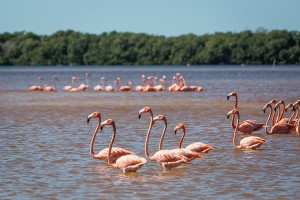


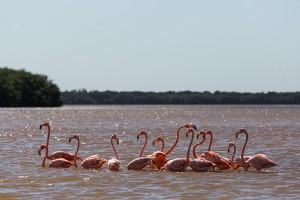

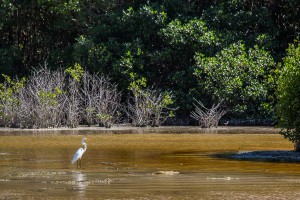
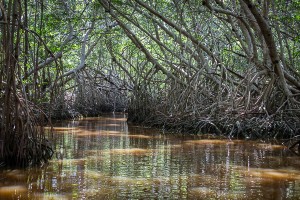
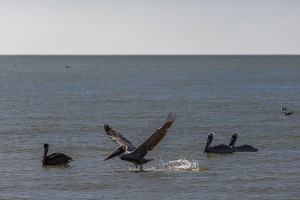
Merida
Merida is the capital of the state of the Yucatan and is about a 3-hour drive due west of Cancun. The historic center is quite nice with many squares, restaurants, museums, art galleries, and old colonial buildings. We spent quite a few evenings walking around the main square and surroundings. It was nice to be so close (walking distance) to everything. We also took a bus tour which was in Spanish so I didn’t understand too much, but the view from the top of the double decker bus made it worthwhile.


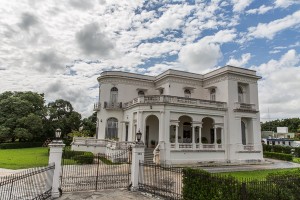

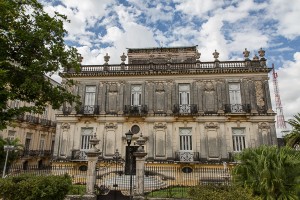

Chichen Itza
Chichen Itza is one of the most visited archaeological sites in Mexico. About 1.2 million people visit every year. After visiting much smaller sites where we were the only people, Chichen Itza was a bit jarring with the sheer number of tourists (busloads, mostly from Cancun) and hawkers selling all kinds of souvenirs. The biggest draw at Chichen Itza is El Castillo (the Kukulkan Pyramid). The temple has 365 steps, one for each day of the year. Each of the temple’s four sides has 91 steps, and the top platform makes 365. It was really quite impressive. Unfortunately no one is allowed to walk on any of the ruins now. With thousands of people visiting every day, I can see why. The second biggest draw is the Ball Court whichis the largest known in the Americas at 554 feet long and 231 feet wide. In the game, players tried to hit a 9-pound rubber ball through stone hoops set high on the court walls. It was also impressive in sheer size. Luckily we arrived early in the morning and I was able to get some shots without too many people. We spent most of the day alternating between walking the ruins and hanging out at the café for a refreshing lunch or drink. It was a hot day!

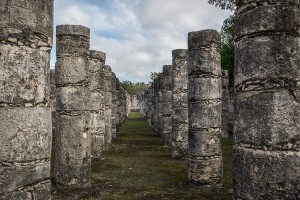
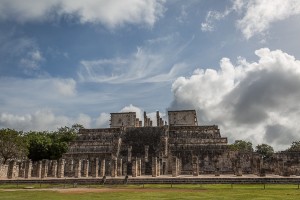
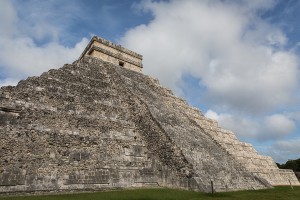
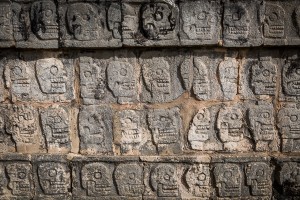

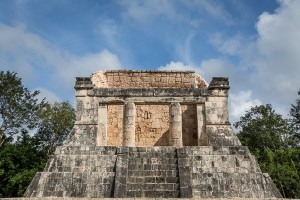

Izamal
Izamal is a small city east of Merida known as the Yellow City since most of its buildings are painted yellow. It was designated as a magical town in 2002, a government program to recognize unique and historically significant towns across the country. The center of the city features a large Franciscan monastery, which is built upon the base of a Mayan pyramid. The city also features a variety of artisans working in all kinds of mediums. We took a horse-drawn carriage for a short tour of the city. I was sold the moment I saw them because the horses were wearing hats! We visited an artisan that makes jewelry from cocoyol seeds and the tips of the henequen plant. That was definitely a highlight. It was Christmas Day so a lot of other places were closed so we just wandered the city and checked out the ruins.
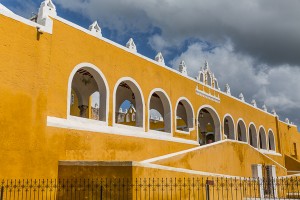
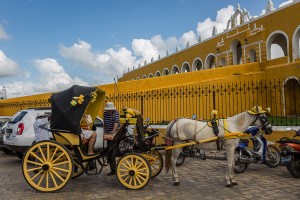
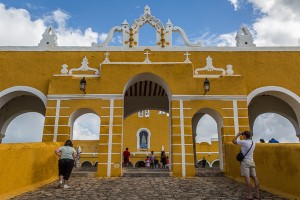
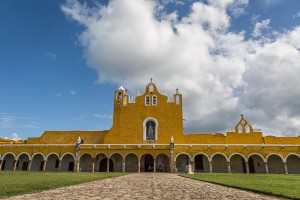
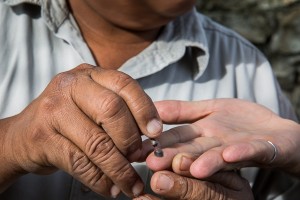
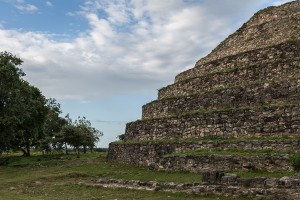
Dzibilchaltun
Dzibilchaltun is a Mayan site only 10 miles north of Merida. The most famous structure is the Temple of the Seven Dolls, named after seven small dolls found at the site by archaeologists in the 1950s. On the vernal equinox, the sun rises and shines directly through one window of the temple and out the other. The temple is connected to the rest of the site by a raised wide road, built up to allow the water to run off during the rainy season. At the other end of the road, the majority of the city’s ruins are found. We were allowed to climb on these structures so that made for some fun. Dzibilchaltun also has a gorgeous above ground cenote, Cenote Xlakah. We spent some time hanging out there on another beautiful day. The renovated museum housing Mayan artifacts was also impressive making this a really great day trip.
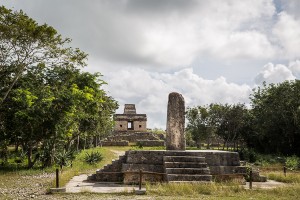
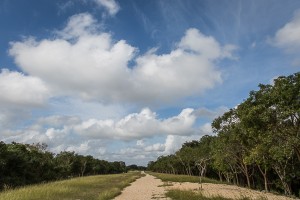
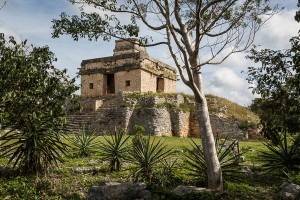


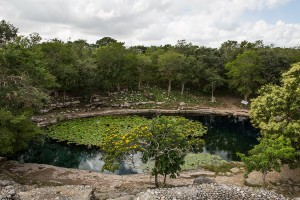
Campeche
Campeche is the capital of the same-name state to the southwest of Merida on the Gulf of Mexico coast. It is a typical harbor town from the Spanish colonial period. The historic center has kept its outer walls and fortifications, designed to defend against attacks from the sea. With the state of preservation and its architecture, Campeche was declared a World Heritage Site in 1999. The pastel colors of the historic center were truly captivating. I enjoyed wandering around to see all the remains of the fortifications. The main square was extremely lively and I was so sad to leave to catch our bus back to Merida just as a huge band was setting up for an evening concert.
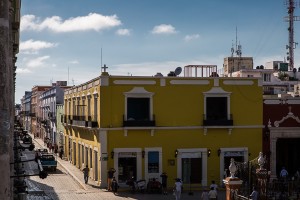
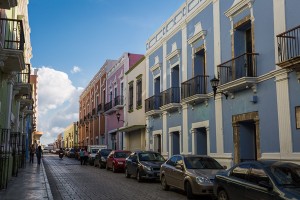
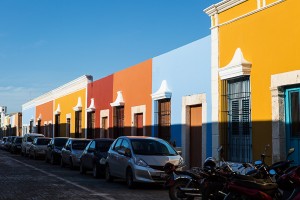
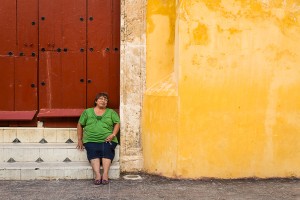

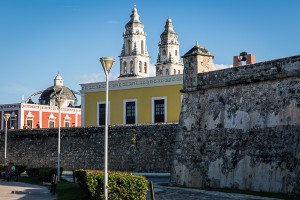


Alas, all good things must come to an end. I was sad to leave my family behind and I certainly could have used a few more days of sunshine. But the Merida taxi driver made my last morning interesting by flying through the quiet city streets at 90 km/h (~55 mph) to get me to the airport in record time. Luckily I survived to tell the tale!
